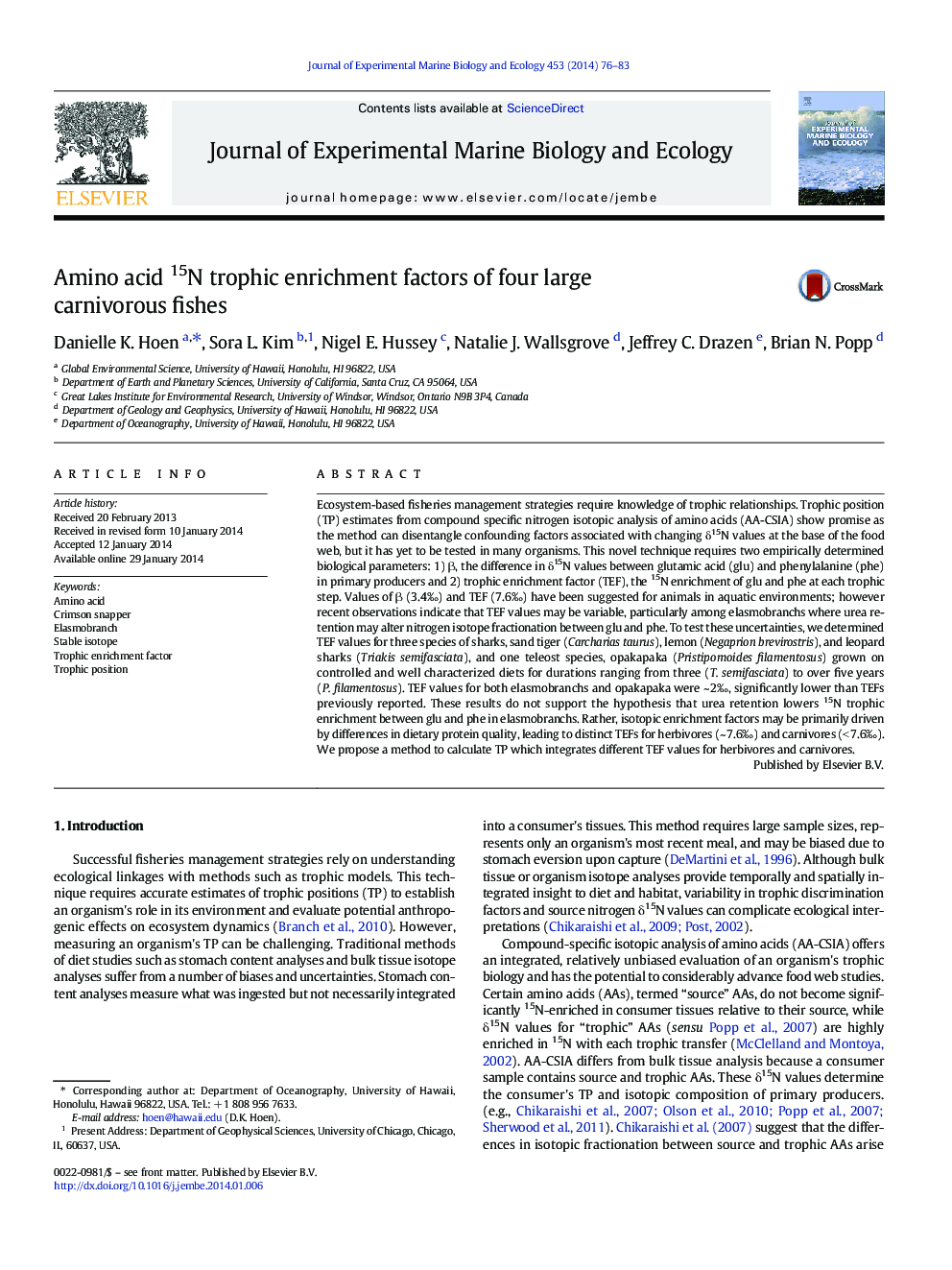| کد مقاله | کد نشریه | سال انتشار | مقاله انگلیسی | نسخه تمام متن |
|---|---|---|---|---|
| 4395577 | 1618422 | 2014 | 8 صفحه PDF | دانلود رایگان |

• Precise values of trophic enrichment factors (TEFs) are lacking in the literature.
• We determined TEFs for three shark species and one teleost species.
• TEFs (~ 2‰) were significantly lower than previously reported values (7.6‰).
• We suggest that TEFs may be a function of dietary protein quality.
• We propose a new trophic position calculation incorporating multiple TEF values.
Ecosystem-based fisheries management strategies require knowledge of trophic relationships. Trophic position (TP) estimates from compound specific nitrogen isotopic analysis of amino acids (AA-CSIA) show promise as the method can disentangle confounding factors associated with changing δ15N values at the base of the food web, but it has yet to be tested in many organisms. This novel technique requires two empirically determined biological parameters: 1) β, the difference in δ15N values between glutamic acid (glu) and phenylalanine (phe) in primary producers and 2) trophic enrichment factor (TEF), the 15N enrichment of glu and phe at each trophic step. Values of β (3.4‰) and TEF (7.6‰) have been suggested for animals in aquatic environments; however recent observations indicate that TEF values may be variable, particularly among elasmobranchs where urea retention may alter nitrogen isotope fractionation between glu and phe. To test these uncertainties, we determined TEF values for three species of sharks, sand tiger (Carcharias taurus), lemon (Negaprion brevirostris), and leopard sharks (Triakis semifasciata), and one teleost species, opakapaka (Pristipomoides filamentosus) grown on controlled and well characterized diets for durations ranging from three (T. semifasciata) to over five years (P. filamentosus). TEF values for both elasmobranchs and opakapaka were ~ 2‰, significantly lower than TEFs previously reported. These results do not support the hypothesis that urea retention lowers 15N trophic enrichment between glu and phe in elasmobranchs. Rather, isotopic enrichment factors may be primarily driven by differences in dietary protein quality, leading to distinct TEFs for herbivores (~ 7.6‰) and carnivores (< 7.6‰). We propose a method to calculate TP which integrates different TEF values for herbivores and carnivores.
Journal: Journal of Experimental Marine Biology and Ecology - Volume 453, April 2014, Pages 76–83